Standard Room or upgrade room as per request
Best time to Travel: November to March
Duration: 3 Nights / 4 Days
Meal as Breakfast
Tour Highlights:
Historical City Tour
SchonBrunn Palace
Wien Tour
Standard Room or upgrade room as per request
Best time to Travel: November to March
Duration: 06 Nights / 07 Days
Meal: Breakfast
Accommodation:
Vienna - Austria Trend Europa or similar
Zell Am See - Cella Central Historic Boutique Hotel or similar
Innsbruck - Hotel Central or similar
Salzburg - Hotel am Mirabellplatz or similaror similar
Tour Highlights:
Guided tour of Vienna
Entrance to Schonbrunn Palace in Vienna
Visit Hallstatt
Funicular Ride to the Hallstatt Skywalk
read more close
Kitzsteinhorn Glacier cable car and entrance in Zell am See
Visit the Krimml Waterfalls
Visit the Sworovski Crystal World in Wattens
Visit Innsbruck
Visit Mondsee
Guided tour of Salzburg
Standard Room or upgrade room as per request
Best time to Travel: November to March
Duration: 07 Nights / 08 Days
Meal: Breakfast
Tour Highlights:
Vienna City Tour
SchonBrunn Palace
Mozart City Tour
Swarovski Crystal World Tour
Standard Room or upgrade room as per request
Best time to Travel: November to March
Duration: 07 Nights / 08 Days
Meal: Breakfast
Accommodation:
Vienna: Parkhotel Schonbrunn or Similar
Zell am See-Kaprun: Schutthof or similar
Munich: Holiday Inn South or similar
Tour Highlights:
Vienna City Tour
SchonBrunn Palace
Munich City Tour
Standard Room or upgrade room as per request
Best time to Travel: November to March
Duration: 07 Nights / 08 Days
Meal as Breakfast (7D), Lunch (1D) & Dinner (7D)
Accommodation
Vienna - Renaissance Hotel or similar
Zell Am See - Grand Hotel Zell Am See or similar
Grossglockner Region - Grauer Bar or similar
Salzburg - Wyndham Grand or similar
Starting from ₹3,23,974/ Per Person
read more close
Tour Highlights
Spanish Horse Riding Show at Hofburg palace
Vienna City Tour
Schonbrunn Palace
Kitzsteinhorn Glacier Excursion
Visit Swarovski Crystal World in Wattens
Sound of Music Tour
Visit halleien Salt Mines
Visit Augustiner Brewery
Enjoy A Luxury Travel Experience

Le Méridien Vienna
Vienna

Vienna Marriott Hotel
Vienna
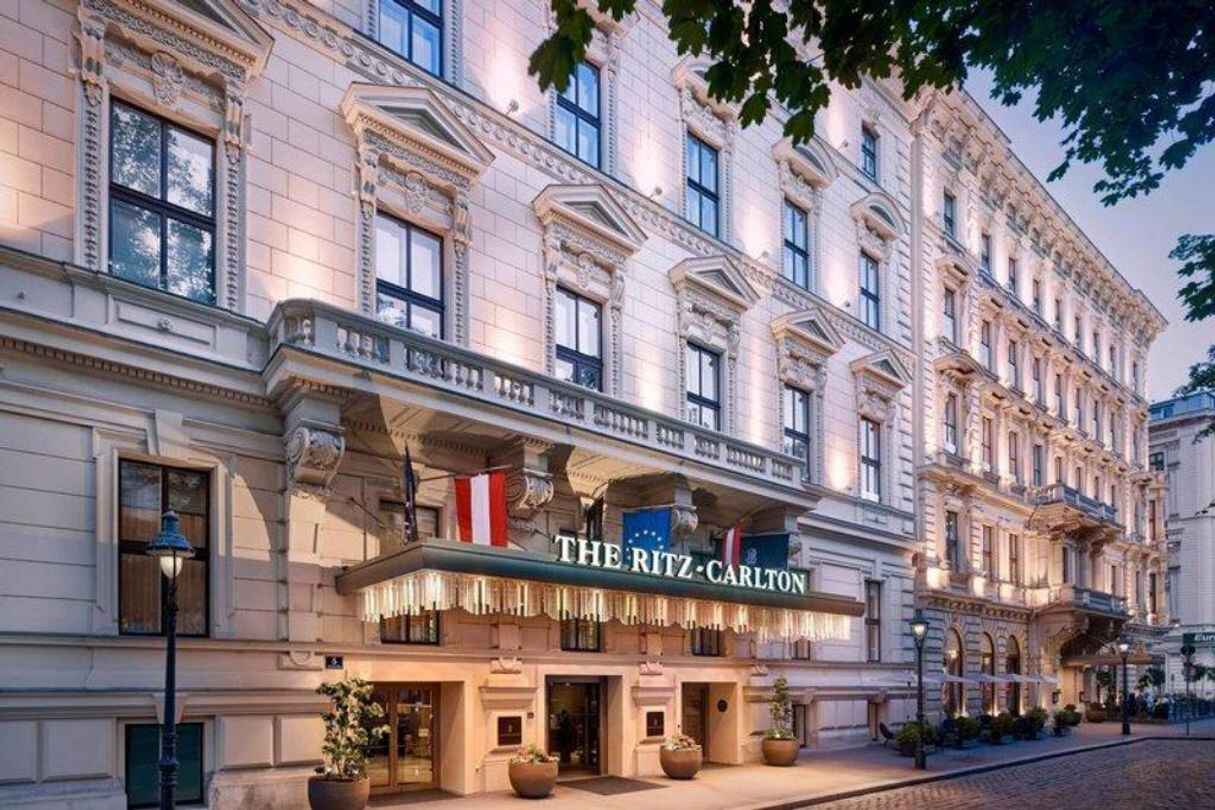
The Ritz-carlton Vienna
Vienna

Palais Hansen Kempinski Vienna
Vienna
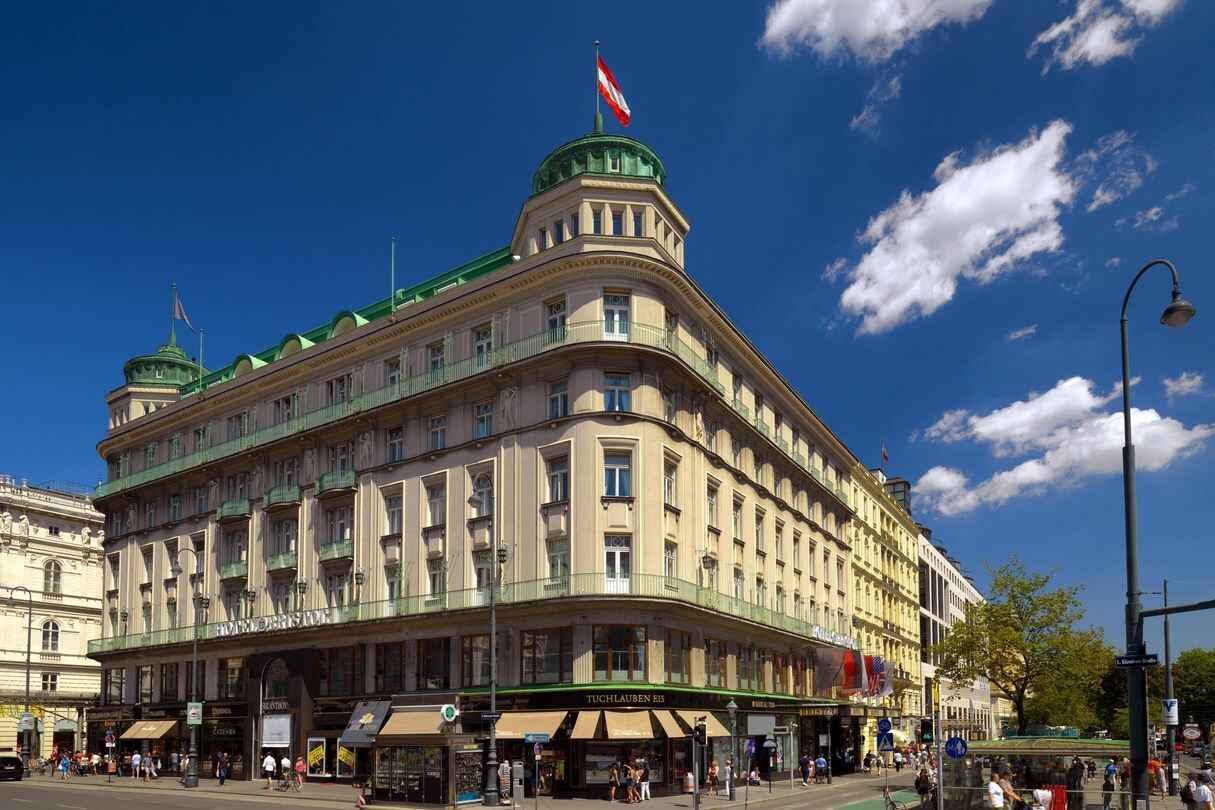
Hotel Bristol A Luxury Collection Hotel Vienna
Vienna
-
SightseeingSightseeing in Vienna is dominated by beautiful historic attractions and cultural treasures. With everything from palaces to 'flying horses', this splendid city has hundreds of interesting sites and attractions to explore. With lovely summers for sightseeing and snowy winters for skiing, Vienna's seasons are just as accommodating. The Imperial Palace is home to the Schatzkammer, which is the greatest treasury in the world and holds treasure from as far back as the Holy Roman Empire. The Fine Arts Museum across from the palace houses many of the art collections gathered by the Habsburgs and is sumptuously decorated with marble, gold leaf, and stucco ornaments.See the world famous Lipizzaner stallions, which appear to fly in their superb performances. Another of Vienna's most recognisable attractions is the Giant Wheel, located in a large wooded park. And for those with song and dance in their hearts, the Vienna State Opera performs a vast repertoire of operas, operettas, and ballets. Vienna has been home to some of classical music's greatest composers, and visitors can easily spend a day touring the residences where Beethoven wrote his 5th Symphony, Haydn composed The Creation, and Strauss wrote the Blue Danube Waltz. No musical tour would be complete without seeing the Mozart Memorial.Most of the city's attractions are encompassed by the Ringstrasse, which makes them easily accessible, especially on foot or by bike. The Vienna Card is handy for reduced fares when using public transport in the city. With so many beautiful areas, cultural attractions and historic sites, Vienna is definitely a city to spend plenty of time in.The Hofburg Palace, or Imperial Palace, was the home of the Austrian Hapsburgs for 600 years. The first fortifications were erected by King Ottakar Premyst in the 13th century and were added to by every generation until it became the monumental structure it is today.As well as housing the president's offices, the palace now encompasses 22 separate museums, the National Library, a 14th-century Augustinian church, the famous Spanish Riding School, and the Royal Chapel, where every Sunday the Vienna Boys Choir sing Mass (they have performed for the Royal Court since 1498).It will be impossible to even catch a glimpse of everything on display at the Hofburg, so visitors should be selective.The most popular of the museums is the Kaiserappartements, which takes visitors on a tour of the Kaiser's imperial apartments, the Sisi Museum, and the Imperial Silver Collection.Situated in the Hofburg Palace, the royal library of the Habsburgs dates from the 14th century and is among the oldest and finest libraries in the world. The six million items stored in the library include papyri, manuscripts, ancient and rare books, maps, globes, portraits, music, photographs, and graphics. The Grand Hall is a palatial room topped by a dome, designed in the Baroque style and decorated with statues and exquisite frescoes. It's regarded as one of the most beautiful library rooms in the world.The Spanish Riding School of Vienna is one of the oldest surviving riding schools in the world where classic dressage is still practised in its purest form. This institute was founded in 1572 and named for the Lipizzaner horses, which are of Spanish origin. The Imperial Court Stud was originally situated near the village of Lipizza, hence the name of the horses. But since the collapse of the Danube Monarchy in 1920, they have been bred at the Federal Stud in Styria.The horses perform their tricks in the Winter Riding School, which was commissioned by Emperor Karl VI. Performances take place between February and June, and September and December. But they are in high demand and booked up months in advance (details on their website). The easiest way to see the horses is during their training sessions. Tickets are only available at the door and cannot be booked in advance. Situated in the stables is the Lipizzaner Museum, which displays the history of the school.Karlskirche is the most outstanding Baroque church in the city and its 236-foot (72m) high dome flanked by two columns forms a dramatic landmark on the Viennese skyline. The church was commissioned by Emperor Charles VI, after the Black Plague that swept through Vienna in 1713, and is dedicated to the Saint Charles Borromeo who was revered as a healer for plague sufferers.The lavishly decorated interior includes frescoes and visitors can get a closer look by taking the elevator to the roof, which is included in the entry fee. Although the lift carries visitors most of the way up, there are some steps to be climbed to get to the very top of the dome.The magnificent Schönbrunn Palace was used as the summer residence of the Hapsburgs from the 18th century onwards. Set among superb gardens, this vast symmetrical structure is everything you would imagine an imperial palace to be.A tour of the palace offers visitors the chance to view the superb assortment of Baroque and Rococo State Rooms and to admire the famous ceiling frescoes of the Great Gallery and the Hall of Mirrors where Mozart once played.The vast gardens are popular with locals and tourists alike, and include a zoo, a maze, and labyrinth, the Privy garden, and the Gloriette with a viewing terrace. Also within the grounds, the Orangery hosts classical concerts during the summer season.One of Vienna's most recognisable landmarks, the Giant Wheel is located in a large wooded park and playground known as the Prater. It was built in 1897 by an English engineering firm and is the only one of its era still standing (the Ferris wheels in Chicago, London, Blackpool, and Paris have long since been destroyed).The wheel's 15 gondolas take 20 minutes to manoeuvre around and offer magnificent panoramic views of the city. Cautious visitors need not worry about the age of the Giant Wheel as it has been very well maintained over the decades! This is a fun attraction for the whole family and will delight childrenThe Belvedere consists of two splendid rococo mansions, designed in the early 18th century, which face each other across formal, sloping grounds offering excellent views over the city. From the outside, it is Vienna's finest palace complex, built by Prince Eugène of Savoy, the famous general who saved Vienna from the advance of the Ottoman Empire.The museums in the two palaces house some of Vienna's most renowned art galleries, offering excellent examples of Austrian art from the middle ages to the present day. Their displays include an unrivalled collection of paintings by Klimt, as well as famous works by Schiele, Kokoschka, Renoir, and Monet. The Medieval and Baroque works are presented in the Lower Palace where many rooms have been preserved in their original state.The Vienna State Opera performs a repertoire of nearly one hundred operas, operettas, and ballets every day from September to June. The opera house was founded in the early 18th century (it was rebuilt in 1955 after being all but destroyed in 1945) and makes for a romantic and regal setting in which to enjoy the performances.As seating tickets are not easily available, an alternative is to buy standing-room tickets, which are well priced and can be purchased on the same day (but expect long queues). The State Opera collaborates closely with the Vienna Philharmonic Orchestra and their famous New Year concert requires advance bookings of up to one year. The building is beautiful and of interest in itself, even if visitors are unable to catch a show.The cathedral is one of the city's most recognisable symbols and the massive south tower, standing at 445 feet (136m) tall, is a dominant feature on the Vienna skyline. The 343 steps can be climbed for a fantastic view over the city.St Stephan's Cathedral is the most important religious building in the city and is one of the greatest Gothic structures in Europe. It has been in a state of continual preservation and repair since its original construction in the 12th century due to fire, city sieges, and bombardment.The cathedral is built of limestone and has an ornately patterned and richly coloured roof covered by glazed tiles. The interior is rich in wood carvings, sculptures, and paintings, and has numerous chapels and altars, as well as the catacombs, which can be visited on a guided tour. Wolfgang Amadeus Mozart was married here, had children baptised here, and his funeral was held in the Chapel of the Cross.The former Hofburg residence today houses one of the largest and greatest graphic art collections in the world with drawings, old master prints, and modern graphic works. The museum explores the development of graphic arts since the 14th century and there are more than 60,000 works on show.Artists featured include Leonardo da Vinci, Michaelangelo, Manet, Picasso, and Cezanne. The Albertina is also one of the most beautiful examples of classical architecture in the world. There is a pleasant cafe for refreshments while the museum is beautifully conceived, with each room decorated to complement the art on display.The Fine Arts Museum across from the Hofburg Palace houses many of the art collections gathered by the Habsburgs and is one of the foremost museums of fine arts and decorative arts in the world.The magnificent building is crowned with a 197-foot (60m) high dome, while the inside is sumptuously decorated with marble, gold leaf, and stucco ornaments, a fitting home to the formidable artistic treasures collected over the centuries.The collections range from Ancient Egyptian, Greek and Roman relics to medieval art, and Renaissance and Baroque paintings. The museum faces the Natural History Museum across the MariaTheresian Platz, which has an identical exterior.The House of Music is an interactive, hi-tech discovery museum devoted to music and is located in the former Palais of Archduke Charles. Four floors take visitors past the music and memorabilia of the great composers who lived in Vienna, such as Mozart, Beethoven, Brahms, and Schubert, and allow visitors to discover today's top musicians, as well as explore the future of music on computers.Visitors can conduct an orchestra, listen to what an unborn child hears in the womb, or paint a musical picture. The museum was awarded top prize for its innovative design and allows visitors to experience music using the senses of sight, sound, touch, and hearing. A glorious combination of fun and education!The impressive Natural History Museum is situated within a neo-Renaissance building that is identical from the outside to the Fine Arts Museum opposite. It is the third largest natural history museum in the world and has some of the oldest exhibits, including early Stone Age artefacts. Visitors can travel through the planet's history, ranging from the diversity of nature to the origins of culture. Guided tours, lectures, and workshops on a variety of interesting themes are offered regularly at the museumThis large public park is a great place for families to enjoy a day in the sunshine. Stroll along the Hauptallee where chestnut trees line the way, or visit the Planetarium and the Prater Museum, both located inside the park.The Wiener Prater also has a small amusement park with a Ferris Wheel, a rollercoaster and a number of other fun rides and diversions, as well as food stalls and games booths. There is plenty of open space here for kids to run around and the cheesy, innocent fun of the amusement park is enjoyable for the whole family. Entrance to the park is free but individual rides must be paid for.Minopolis is Europe's first theme park featuring a city that was specifically designed for children, with buildings, doors, cars, and other objects reduced to children's size. Children can pretend to be adults and go about their daily life in the city of Minopolis, working as whatever their hearts desire: a journalist, fire-fighter, policeman, doctor, or dentist.Children can discover their dream jobs in a fun and safe environment. There are more than 80 professions for children to try their hand at. The theme park is designed with children aged between four and 12 in mind. Although a visit is lots of fun for kids, they also learn a lot about life in a safe and friendly environment, where they are under the supervision of trained coaches, most of whom are qualified teachers.One of Vienna's most famous residents, Dr Sigmund Freud revolutionised the study of psychology with his ideas. Though many of his theories, once wildly popular, have been discredited, the term 'Freudian slip' and other ideas are still widely known and debated today.The Freud Museum in Vienna houses a number of antiques and mementos of the doctor inside the offices he practised in from 1891 to 1938. Guided tours are available and the museum has a gift shop offering photos and other memorabilia, as well as books written by Freud. This attraction will be very exciting for those interested in the great man and his work, and it will provide a good introduction for those unfamiliar with Freud.Kids Attractions OverviewBoasting wonderful scenery and amazing outdoor activities the whole family can enjoy, Vienna is a great place for children on holiday. From walks to bike rides and hikes, there is plenty to see and do in Vienna that will keep active children entertained for hours on end.Take a walk through the breathtaking Vienna Woods, or pack a picnic and head out for the day to the Wiener Prater, where the kids will have ample space to run around and let off some steam in the amusement park with its famous Ferris wheel. When the novelty wears off, head to the Planetarium, which is also located here.Kids will love watching the world famous Lipizzaner stallions as they 'fly' through the air. But parents should note that the Lipizzaner shows must be booked long in advance, and often the training sessions, which are open to the public, are the best option for seeing the incredible horses.When the weather is cold and wet, why not explore BOGI Park, Austria's largest indoor playground. Children will be beside themselves with the choices here and the opportunity to meet other kids. And if the children aren't scared of clowns, the Circus and Clown Museum is also worth a visit. Minopolis, a mini children's city where kids can try their hand at various professions, is also a great favourite. .ClimateVienna has a temperate continental climate, with warm, sunny summers, and cold winters. The average temperature range in winter (December to February) is between 23°F and 34°F (-5°C to 2°C), while in summer (June to August), temperatures range between 75°F and 91°F (24°C and 33°C). Thunderstorms occur frequently in summer and snowfall is common in winter. Spring, autumn, and the beginning of summer are perhaps the best times to travel to Vienna.
-
NightlifeLaidback Vienna does have a nightlife, it's just not as frantic as that found in many other European capitals. The city's best bars tend to be in the Innere Stadt(inner city), with a range of venues spanning Irish pubs to designer bars, as well as time-capsule spots from before World War I, with Adolf Loos's American Bar is a prime example. The Copa Cagrana's beach-styled bars serve glorious fruit cocktails.As far as nightclubs go, the Gurtel area is home to the Rhiz which attracts electronica fans and there are a couple of clubs near Nussdorfer Strasse which offer house music. For the more culturally inclined, many Viennese museums stay open late, with the Albertina and the House of Music being classic choices. Of course, Vienna is a musical city, and operas, ballets, and classical concerts are probably the best options for after dark entertainment.
-
RestaurantsAustria's cuisine is a rich stew of historic, international influences. Many local chefs combine traditional Viennese dishes with the principles of nouvelle cuisine, creating Neue Wiener Küche (New Viennese cuisine). Vienna is well known for its pastries, with other famous dishes including Wiener Schnitzel, Gulasch, and Tafelspitz(boiled beef with apple and horseradish sauce). The best desserts to try are Sachertorte cake and Apfelstrudel(apple strudel). Don't be surprised if you are offered a shot of Schnapps after a meal! Lunch is traditionally the biggest meal of the day for Austrians, but this has changed over the years and most working people now eat their most important meal in the evening.Vienna's bar and restaurant scene is currently booming, and great eateries for all budgets can be found. The best districts for eating out in Vienna include the Museum Quarter, which is full of outdoor cafes and some of the city's most renowned restaurants; the Spittelberg district, which boasts many bars and restaurants, as well as some interesting shops; the Naschmarkt and trendy Freihaus district, which are wonderful after dark; and the area around Gumpendorter Strasse, which is a new hotspot for popular restaurants.
Name: Hietzinger Bräu
Address: 1130 Wien, Auhofstraße 1
Website: www.plachutta.at
This award-winning restaurant stays true to its traditional values and is somewhat of an institution when it comes to Viennese steak restaurants. The tasteful décor and impeccable cuisine ensure that this eatery stays within the top ranks of Vienna's dining scene.The Tafelspitz (boiled beef) is without a doubt the most famous choice of beef and is the flagship dish of this restaurant. The beef is served in the traditional manner - in beef soup, with apple and horseradish, roast potatoes and chive sauce. Open daily for lunch and dinner. Reservations recommended.Name: Café Central
Address: Herrengasse 14
Website: www.palaisevents.at
Café Central is probably one of the most famous cafes in the world due to its high profile clientele during the history of Vienna, which included famous artists, writers, and intellectuals such as Lenin and Trotsky. The grand, cathedral-like setting with its marble pillared hall and soaring ceiling is a fine setting for the excellent coffee and apple strudel that they serve up, along with an assortment of other desserts and pastries for tea. Light lunches are served and the menu includes a variety of provincial dishes and Viennese specialties, as well as salads, soups, sandwiches, and vegetarian dishes. Piano music plays daily from 5pm. Open daily from 10am.Name: Wiener Rathauskeller
Address: Rathausplatz 1
Website: www.wiener-rathauskeller.at
The venue may be Gothic, sunk into the cellars beneath the historic town hall, but the style, atmosphere and cuisine are very up to date. This spacious eatery features various rooms furnished in different styles and can handle up to 1,100 people. The food can be described as 'modern Viennese', offering fare such as goulash, Wiener Schnitzel and apple strudel. Open daily for lunch and dinner.Name: Café Demel
Address: Kohlmarkt 14
Website: www.demel.at
Arguably the best of Vienna's 300-odd traditional coffee shops, offering their legendary confections and pastries, is the Café Demel. The café is best known for its original Sachertorte (chocolate frosted cream cake), but the rest of the range of sweet delights on offer is just as delectable. Demel also serves a large range of sandwiches and, of course, really good coffee. Open daily from 10am to 7pm. Vienna's other renowned coffee shop is Café Central near the Hofburg Palace, where Lenin and Totsky once met regularly.Name: Restaurant Imperial
Address: Kärntner Ring 16
Website: http://www.imperialvienna.com/en/restaurant-bar
The warm, cosy and classic style of the Restaurant Imperial lends itself perfectly to a stylish dining affair. The décor is tasteful and evokes a feeling of old-world charm while chef Hans Juergen Schauer creates delectable dishes such as fillet of turbot with goose liver and fillet of veal, or the old favourite, Wiener Schnitzel. Open daily for dinner. Reservations essential.Name: Motto
Address: Schonbrunnerstr 30
Website: www.motto.at
This funky restaurant is stylish to the extreme, with quirky red and black decor and an eclectic menu that ranges from sushi to spaghetti. The restaurant expands in the summer with tables set up in the attractive garden. Motto is open late into the night, closing at 4am.Name: Wollzeile
Address: Wollzeile 5 (St Stephansplatz)
Website: www.figlmuller.at
When in Vienna, do as the Viennese do: indulge in Wiener Schnitzel, the delicacy most associated with the romantic city. Reputed to serve the biggest and best schnitzel is Wollzeile, a wine tavern where the long tables are always packed with hungry customers sampling the golden-brown schnitzels. Next door to St Stephen's Cathedral, it is open daily for lunch and dinner. Wollzeile is closed during August.Name: Steirereck
Address: Rasumofskygasse 2
Website: steirereck.at
Meaning 'corner of Styria' (a state in southeast Austria), Steirereck is one of Austria's top restaurants, featuring seasonal Austrian cuisine with a Styrian emphasis. The menu is small and changes regularly according to the freshest ingredients available, but everything is superbly prepared.Meals begin with freshly baked bread and close with a selection of more than 60 cheeses from the restaurant's own cellar. Seasonal offerings might include foie gras Steirereck, Styrian roast beef, lobster, lamb with crepes, rabbit with risotto, or smoked monkfish. Dress is smart and reservations are recommended. Open Monday to Friday.Name: DO & CO
Address: Stephansplatz 12
Website: www.doco.com
Located on the seventh floor of the Haas Haus, Do & Co is the flagship restaurant of Do & Co International Hotel and offers the best views in town, situated opposite St Stephan's Cathedral. The cuisine is international, featuring mainly modern Viennese and Asian fare, but the extensive menu also covers South America and wider Europe. The menu covers 'Tastes of the World', 'Beef & Co', 'Kebab, Wok and Curries', 'Catch of the Day', 'Austrian Classics', and different kinds of sushi. Reservations are highly recommended, and dress is smart. Open daily from 12pm. -
Culture
Vienna Ball Season
Venue: Various
Start: 2018-12-01
End: 2019-02-28
Notes: December 2018 to February 2019
Vienna is the only city in the world where balls still dominate the social calendar during the winter season. A Viennese ball is a unique opportunity to experience the sophisticated charm of the city and its famous eponymous waltz.The official ball season offers about 300 public balls for every taste and pocket, of which the most famous are the Opera Ball, the social elite highlight of the European ball season, the Philharmoniker Ball, and the glamorous Kaiserball at the imperial Hofburg Palace.The Kaiserball is the traditional opener and is a glittering New Year's Eve celebration attracting tourists and locals alike. The season officially lasts from New Year's Eve until Ash Wednesday the following year, but balls can occur up until June. Numerous rental services in the city specialise in ball gowns and formal wear.New Year’s Day Concert
Venue: Vienna Musikverein
Start: 2019-01-01
End: 2019-01-01
Notes: 1 January 2019
Website: www.wienerphilharmoniker.at
Performed by the Vienna Philharmonic Orchestra, the annual New Year's Day concert is seen by millions of viewers worldwide and is a glorious, traditional start to the New Year. The orchestra is considered to be one of the finest in the world and this most famous of concerts features some of the most popular waltzes by the celebrated composer Johann Strauss. The concert is loved the world over and is now broadcast in about 90 countries. For more information, one can contact the ticket and ball office of the Vienna Philharmonic with details on their website. The contact number is +43 1 505 6525.Vienna Festival (Festwochen)
Venue: Various
Start: 2018-05-11
End: 2018-06-17
Notes: 11 May to 17 June 2018
Website: www.festwochen.at
One of Vienna's summer highlights, the Vienna Festival (Wiener Festwochen) is a cultural spread of art, music, dance, theatre, and opera, performed by top international artists at main venues around the city.The festival has been held since 1951 when the four Allies still occupied Vienna after World War II, and remains a proud demonstration of Austria's artistic talent. There are a huge variety of events, ranging from classical to modern, with shows, concerts, and exhibitions for every taste.The annual International Music Festival coincides with the Vienna Festival, traditionally opened by the Vienna Philharmonic Orchestra. For a full Vienna Festival programme check out the official website listed below.Donau (Danube) Island Festival
Venue: Donauinsel (Danube Island)
Start: 2018-06-22
End: 2018-06-24
Notes: 22 - 24 June 2018
Website: www.donauinselfest.at
The Danube Island Festival has become one of the largest youth parties in Europe and attracts millions from around the world to take part in a weekend of free entertainment, music, and dancing. Besides local bands and DJs, there are world-famous international artists and numerous open-air performances that take place on various stages around the island.A broad range of musical genres are represented, with everything from classical to rap, and food kiosks provide a wonderfully diverse range of international cuisines. Nearly three million visitors now attend the event annually. Check out the official website listed below for a full programme and more details. -
ShoppingVienna's most trendy shopping strip is the Mariahilfer Strasse, where hundreds of stores offer fashion, jewellery, and accessories. In the city centre, there are a variety of jewellery stores and boutiques. Local specialities include Augarten porcelain, ceramics, handmade dolls, wrought-iron work, and leather goods. Agent Provocateur is located at 14 Tuchlauben, the first outlet of the cult London underwear label in central Europe. Kiehl's started out 150 years ago in a small apothecary and is now a chic cosmetics brand; its flagship store is on Tuchlauben in Vienna. For arty T-shirts and sweaters by leading designers, visit Firis on Bauernmarkt.On Freisingergasse, Schokoladekönig makes handmade chocolate treats, while Boehle stocks superior wines and traditional specialities (deli snacks) in Wollzeile. For spices and cookery books, visit Babette's on Schleifmühlgasse. Karlsplatz holds the Naschmarkt food market during the week and a flea market on Saturdays. Go to City Hall Square in December for the Christmas market. The Kaufhaus Schiepek department store at Teinfaltstraße is definitely worth visiting for its variety of outlets. For the more eccentric, Carnaby sells vintage fashion and accessories on Neubaugasse, while magicians' accessories and gimmicks can be found at Zauberklingl on Führichgasse. Austria's VAT, as much as 34% on some luxury goods, is refundable with a valid receipt. Tourists can also take advantage of tax-free shopping where advertised. With something for everyone in store, Vienna is the place to break in those shopping shoes.
-
Getting AroundVienna boasts one of the finest public transport systems in Europe. It is safe and easy to use, consisting of punctual buses and trams, a fast U-Bahn (underground), and S-Bahn (railway). Most operate from about 6am to midnight; buses stop earlier but there are night buses on weekends covering the major routes. The U-Bahn is the fastest way to get around the city, while the S-Bahn is the fastest way to get to the airport. The tram network is one of the largest worldwide and is the next best way of getting about, with the added advantage of being a good way to see the city, although some lines don't operate on weekends. Buses are useful in the inner city where there are no trams.Fares are standard for all forms of public transport (€2.30 for a single), and once validated will allow one journey including transfers in the same direction. Travel passes are available: the Vienna Card is valid for three days, allows unlimited travel on public transport, and offers discounts at many attractions, shops and restaurants. Taxis are plentiful, reliable and metered, but have a list of surcharges and are among the most expensive in Europe. The most romantic, if expensive, way to get about is by horse-drawn carriage, or fiaker. A car is generally a burden in Vienna, but can be useful for trips outside the city.
-
HealthNo vaccinations are necessary for business visits or general tourism in Austria. There is, however, a risk of tick-borne encephalitis for long-term visitors who expect to be visiting rural or forested areas in spring or summer. These travellers should consider vaccination and ensure they take precautions against tick infestation. Water and food are safe. Medical facilities are excellent. Medical insurance is advised unless from the UK - citizens of EU countries can get free emergency medical treatment at public hospitals in Austria on production of a European Health Insurance Card (EHIC).
-
Passport/VisaThe borderless region known as the Schengen area includes the following countries: Austria, Belgium, Czech Republic, Denmark, Estonia, Finland, France, Germany, Greece, Hungary, Iceland, Italy, Latvia, Lithuania, Luxembourg, Malta, The Netherlands, Norway, Poland, Portugal, Slovakia, Slovenia, Spain, and Sweden. All these countries issue a standard Schengen visa that has a multiple entry option that allows the holder to travel freely within the borders of all. For most nationalities, passports are required to be valid for three months beyond period of travel. We always recommend that passports be valid for six months from the departure date.
-
SafetyTravel to Austria is generally trouble-free. However, visitors are advised to take sensible safety precautions, particularly in larger cities.







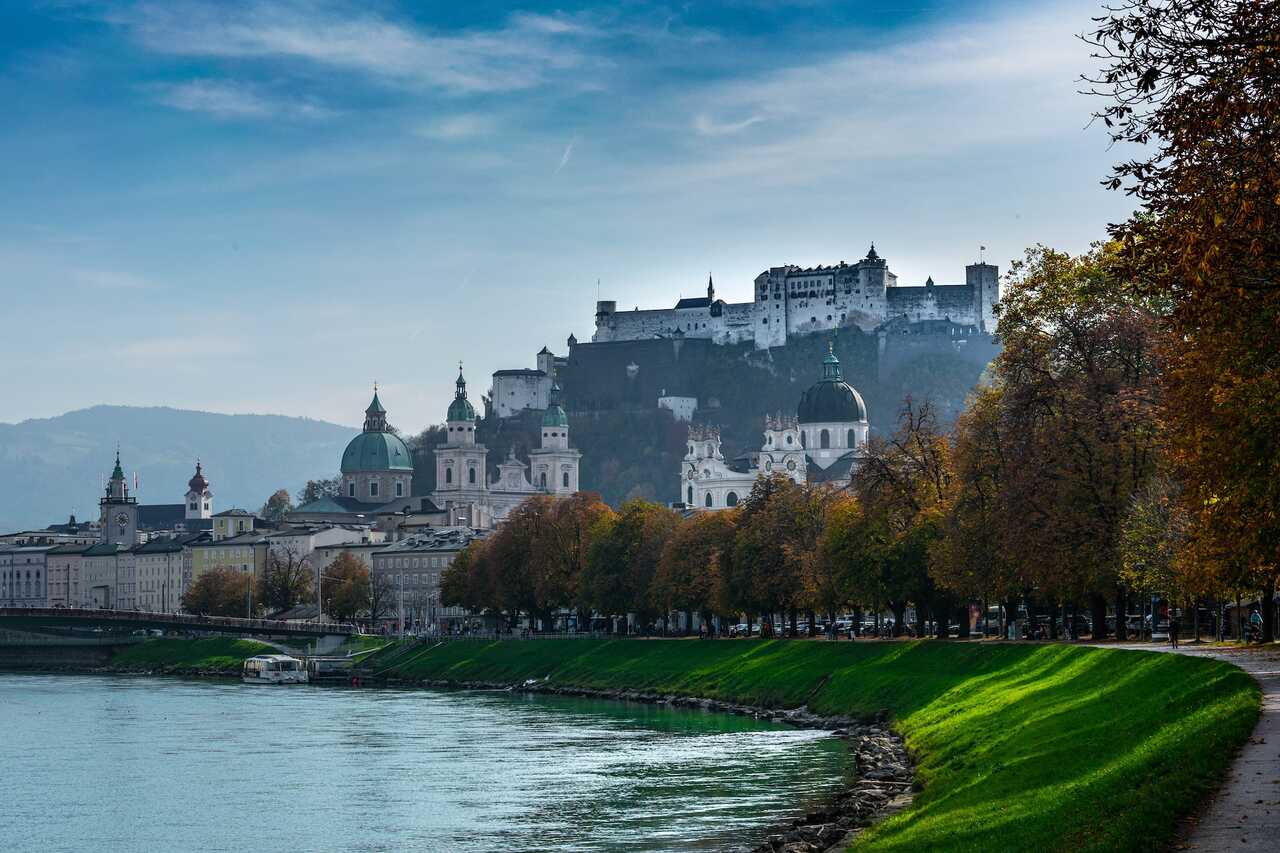
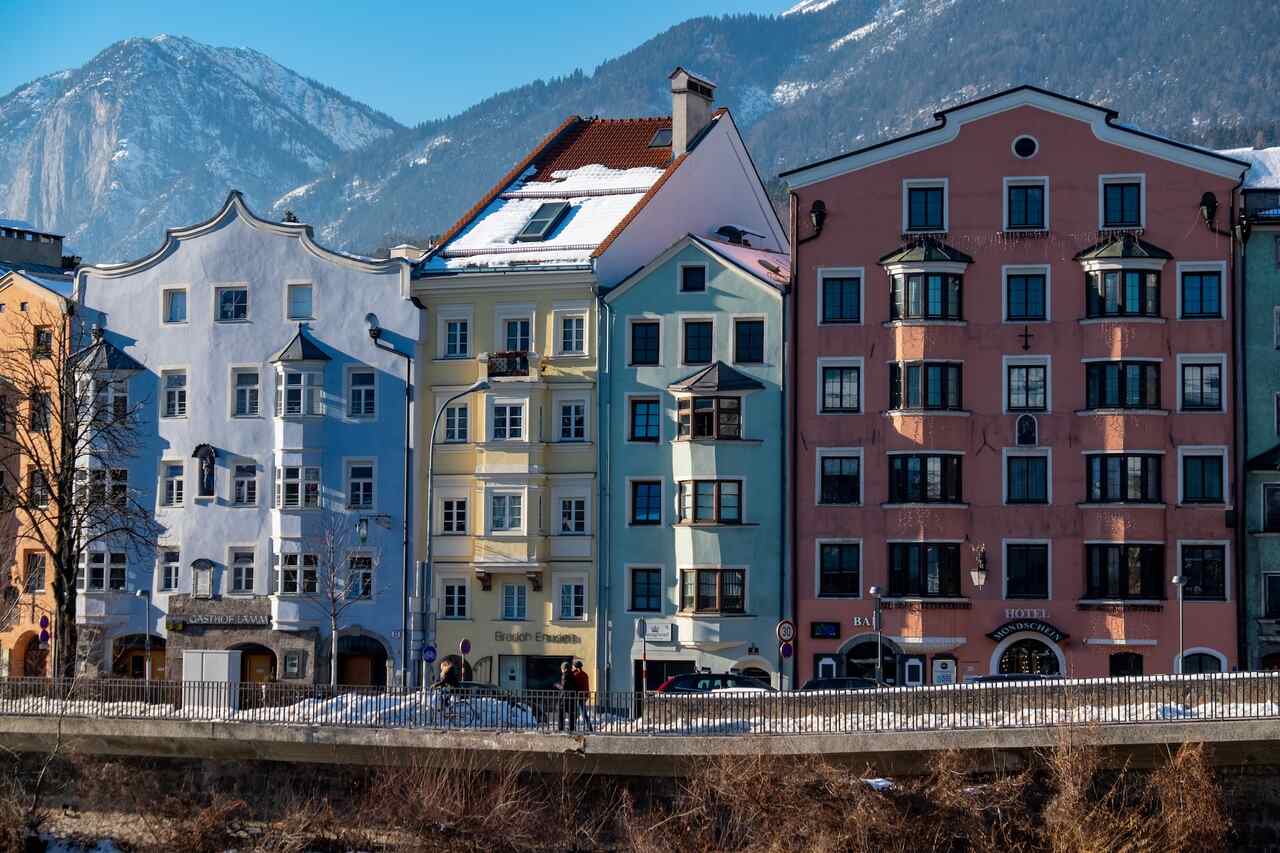
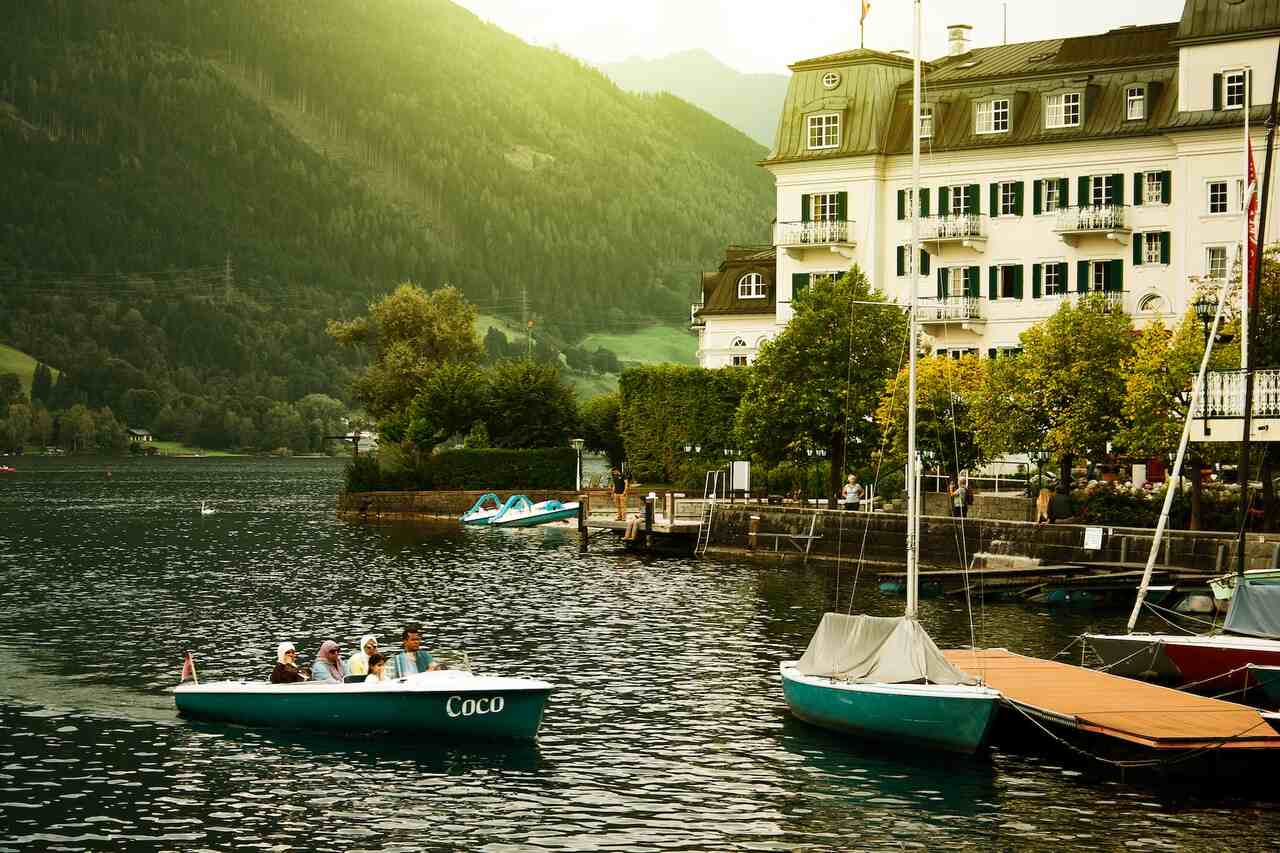

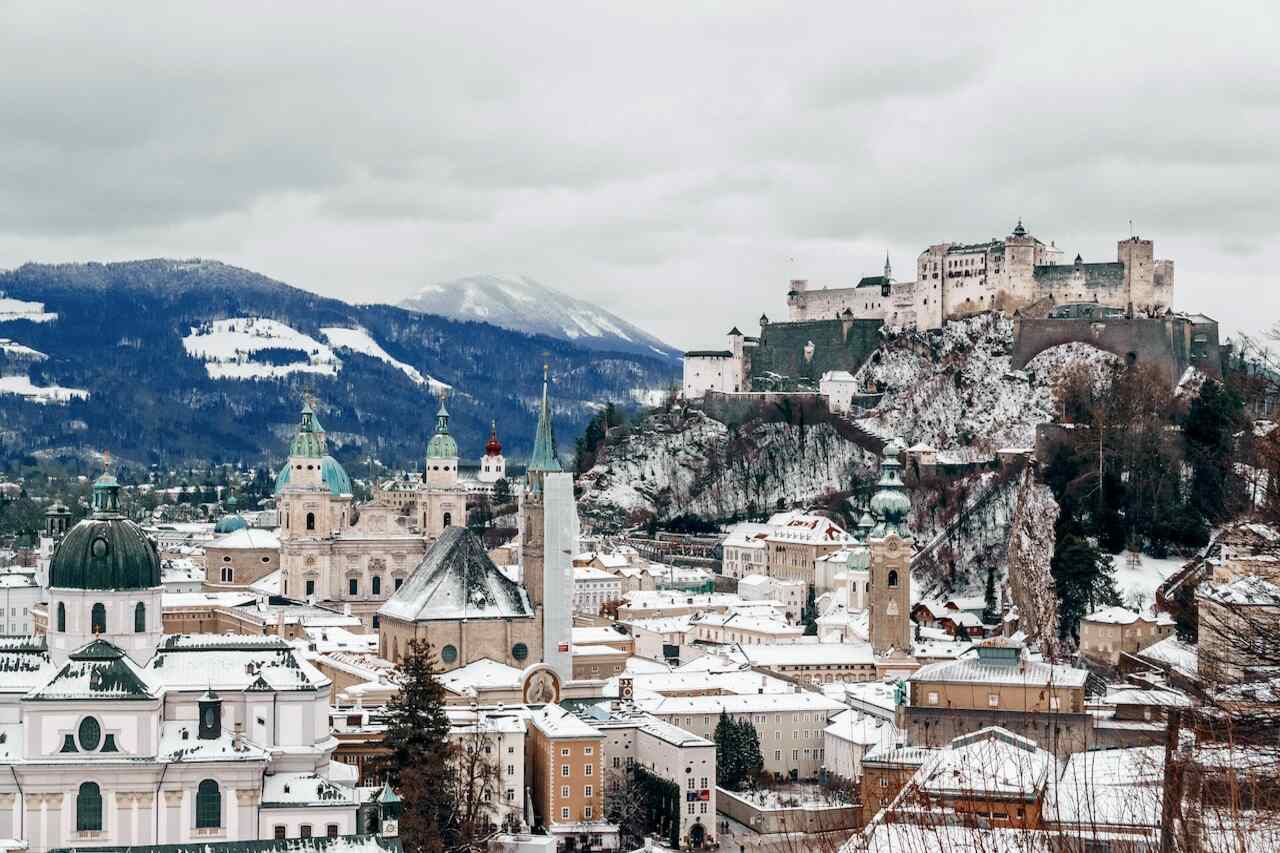














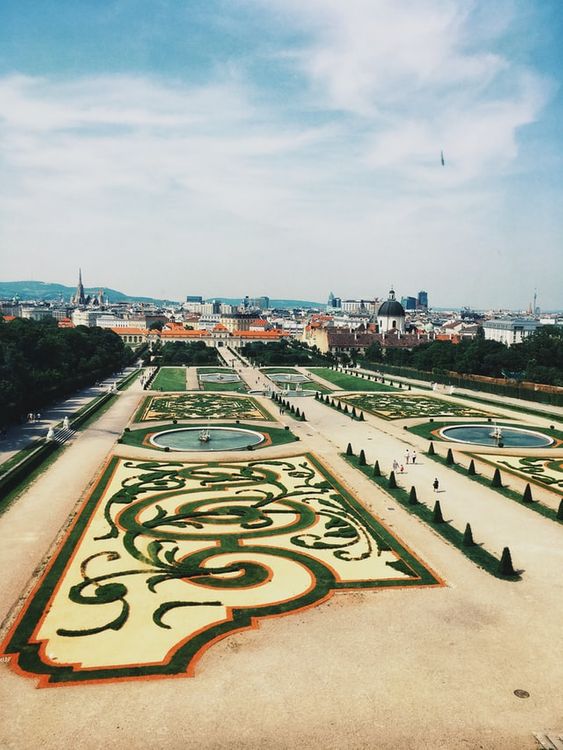

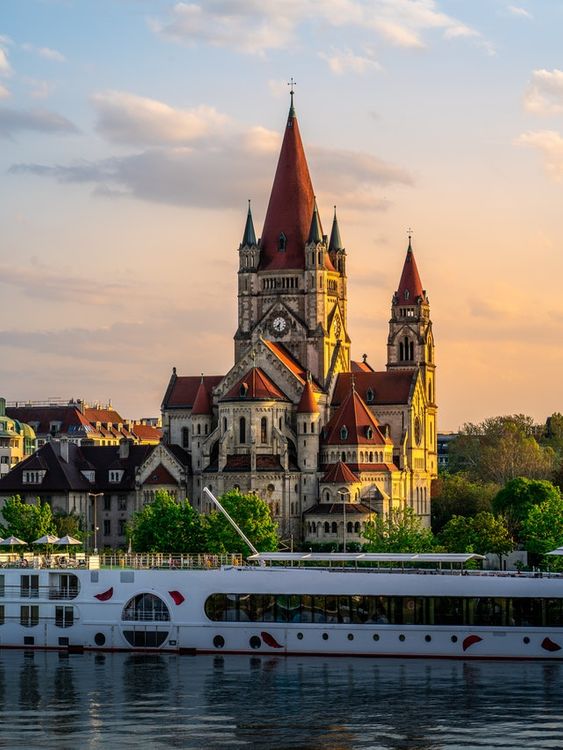
 Enquiry Now
Enquiry Now